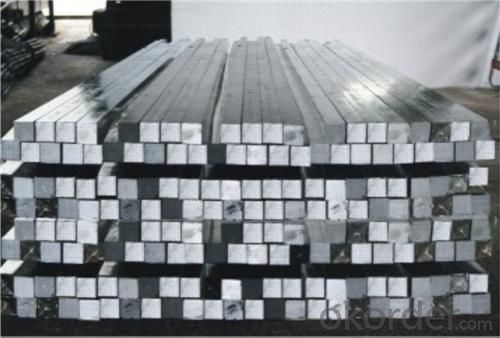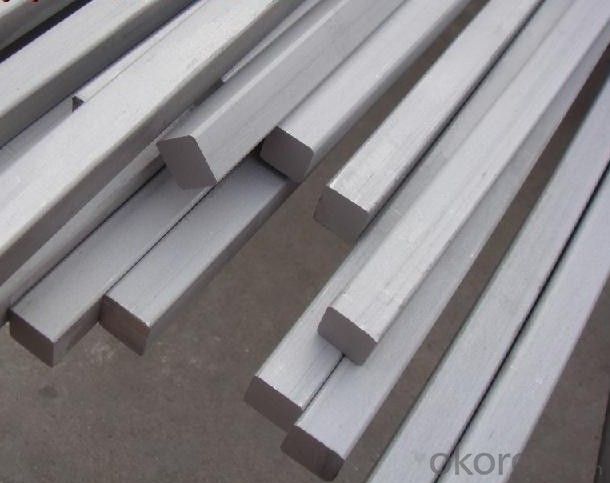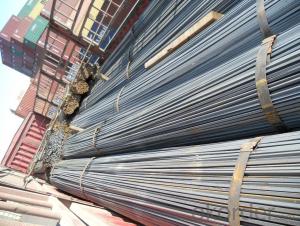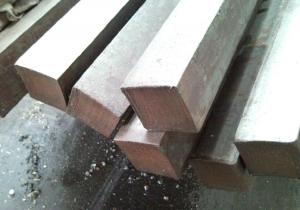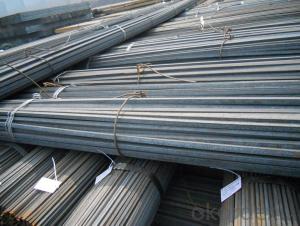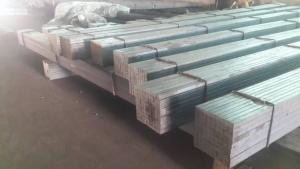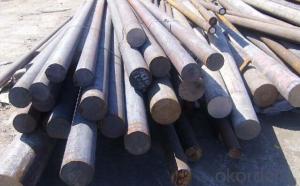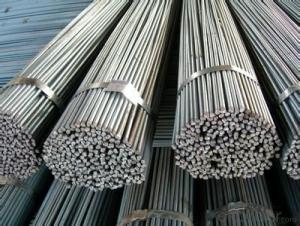Hot Rolled Square Carbon Steel Bar with Many Sizes
- Loading Port:
- China Main Port
- Payment Terms:
- TT or LC
- Min Order Qty:
- -
- Supply Capability:
- -
OKorder Service Pledge
OKorder Financial Service
You Might Also Like
Product Description:
OKorder is offering Square Bar at great prices with worldwide shipping. Our supplier is a world-class manufacturer of steel, with our products utilized the world over. OKorder annually supplies products to European, North American and Asian markets. We provide quotations within 24 hours of receiving an inquiry and guarantee competitive prices.
Product Applications:
-The Square Steel is normally used as structure steel.
-Row material for other structure steel like steel angles, channels, I-beams, H-beams, etc…
Product Advantages:
OKorder's Square Bar are durable, strong, and resist corrosion.
Main Product Features:
· Premium quality
· Prompt delivery & seaworthy packing (30 days after receiving deposit)
· Corrosion resistance
· Can be recycled and reused
· Mill test certification
· Professional Service
· Competitive pricing
Product Specifications:
1. Grade: Q195, Q235, Q345
2. Diameter: 6mm-150mm
3. Length: 6m, 9m, 12m or as customer’s request
4. Tolerance: Within ±5% for weight; ±2mm for diameter
5. Note: The price can be better is the quantity is good
6. Chemical composition
Standard | Grade | Element (%) | ||||
C | Mn | S | P | Si | ||
GB | Q195 | 0.06~0.12 | 0.25~0.50 | ≤0.050 | ≤0.045 | ≤0.30 |
GB | Q235B | 0.12~0.20 | 0.30~0.70 | ≤0.045 | ≤0.045 | ≤0.30 |
-Mechanical Properties:
Mechanical Properties | Grade | Steel diameter(mm) | |||
≤16 | 16~40 | 40~60 | 60~100 | ||
Yield Point Δs/MPa | Q195 | ≥195 | ≥185 | - | - |
Q235 | 235 | 225 | 215 | 205 | |
Tensile Strength | Q195 | 315~390 | |||
Q235 | 375~500 | ||||
Elongation δ5% | Q195 | ≥33 | ≥32 | - | - |
Q235 | 26 | 25 | 24 | 23 | |
Payment:
-Invoicing on theoretical weight or actual weight as customer’s request.
-FOB, CFR or CIF.
-Regular terms of payment:
1, 30% payment in advance, the remaining balance (70% payment) against the copy of B/L.
2, 30% payment in advance, the remaining balance (70% L/C) against the copy of B/L.
3, Negotiable.
FAQ:
Q1: Why buy Materials & Equipment from OKorder.com?
A1: All products offered byOKorder.com are carefully selected from China's most reliable manufacturing enterprises. Through its ISO certifications, OKorder.com adheres to the highest standards and a commitment to supply chain safety and customer satisfaction.
Q2: How do we guarantee the quality of our products?
A2: We have established an advanced quality management system which conducts strict quality tests at every step, from raw materials to the final product. At the same time, we provide extensive follow-up service assurances as required.
Q3: How soon can we receive the product after purchase?
A3: Within three days of placing an order, we will begin production. The specific shipping date is dependent upon international and government factors, but is typically 7 to 10 workdays.
Q4: What makes stainless steel stainless?
A4: Stainless steel must contain at least 10.5 % chromium. It is this element that reacts with the oxygen in the air to form a complex chrome-oxide surface layer that is invisible but strong enough to prevent further oxygen from "staining" (rusting) the surface. Higher levels of chromium and the addition of other alloying elements such as nickel and molybdenum enhance this surface layer and improve the corrosion resistance of the stainless material.
Images:
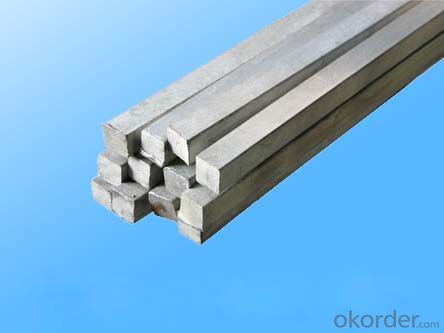
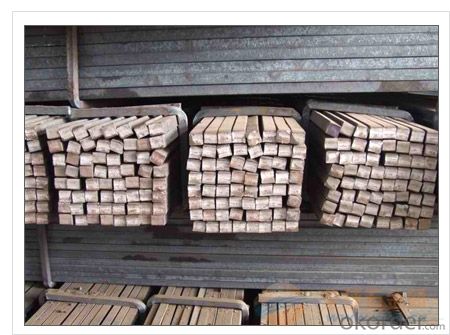
- Q: How do you use a steel square to lay out a common rafter?
- To use a steel square to lay out a common rafter, follow these steps: 1. Start by determining the pitch of the roof. This is the angle at which the roof slopes, usually expressed as a ratio such as 4:12 or 6:12. The first number represents the rise (vertical distance) and the second number represents the run (horizontal distance). 2. Measure the span of the roof, which is the horizontal distance from one outside wall to the other. This will determine the length of the rafter. 3. Lay the steel square on a flat surface with the long side (blade) facing towards you and the shorter side (tongue) pointing away. 4. Find the pivot point on the square, which is where the blade and tongue meet. This is typically marked with a small hole or notch. 5. Place the pivot point at the end of the square on the edge of the lumber you will be cutting the rafter from. Make sure the square is aligned with the edge of the lumber. 6. Using the rise and run measurements, locate the corresponding numbers on the steel square. These are usually marked along the blade and tongue. 7. Once you have located the rise and run measurements, use a pencil or marker to mark the points on the lumber where the blade and tongue intersect. 8. Connect the marked points with a straight line to create the outline of the rafter. 9. Repeat this process for each rafter, making sure to account for any variations in the pitch or span of the roof. By using a steel square to lay out a common rafter, you can ensure accurate and precise cuts that will allow the rafter to fit properly and provide the necessary support for the roof structure.
- Q: How do you use a steel square to measure and mark perpendicular lines?
- Achieving precise measurements and markings for perpendicular lines can be accomplished by utilizing a steel square. To accomplish this, adhere to the following guidelines: 1. Start by situating the steel square on the desired surface or material where a perpendicular line is to be established. Position one edge of the square against the reference edge or surface. 2. Guarantee that the square is appropriately aligned, ensuring that the longer side of the square is parallel to the reference edge or surface. Verify that the square is also positioned at a 90-degree angle in relation to the reference edge. 3. Once the square is correctly aligned, firmly secure it against the surface and employ a pencil or marking tool to create a line along the square's edge. 4. Subsequently, relocate the square away from the reference edge or surface, ensuring that the 90-degree angle between the square and the reference edge is maintained. 5. Align the longer side of the square parallel to the previously marked line, and position it so that one edge of the square aligns with the line. 6. With the square securely held against the surface, utilize a pencil or marking tool to generate a second line along the square's edge. 7. The line produced by the square ought to be perpendicular to the initial reference line, forming an ideal right angle. By adhering to these instructions, it is possible to accurately measure and mark perpendicular lines with the aid of a steel square. It is crucial to ensure that the square remains aligned and firmly secured against the surface to achieve precise outcomes.
- Q: Can a steel square be used for checking the squareness of a drill press quill?
- Yes, a steel square can be used for checking the squareness of a drill press quill. A steel square is a precision measuring tool with a right angle, which can be used to determine whether two surfaces or components are perpendicular to each other. By placing the steel square against the quill of a drill press and ensuring that it is flush against the quill and the base, one can visually inspect if the quill is perfectly perpendicular to the base. If the steel square meets both surfaces at a 90-degree angle, then the quill is square. However, if there is a gap or if the angle is not a perfect 90 degrees, adjustments may be needed to ensure the drill press quill is properly aligned.
- Q: How do you use a steel square to determine the center of a circle?
- To use a steel square to determine the center of a circle, place the square on the circle so that the edges of the square intersect the circle at two points. Then, draw a line connecting these two points on the circle. Repeat this process with another pair of intersecting points on the circle. The point where these two lines intersect is the center of the circle.
- Q: Can a steel square be used for checking the squareness of a disc sander table?
- No, a steel square cannot be used for checking the squareness of a disc sander table. A steel square is designed to measure and check right angles on flat surfaces, whereas a disc sander table is curved and not flat. To accurately check the squareness of a disc sander table, a precision square or a specialized tool specifically designed for curved surfaces should be used.
- Q: Can a steel square be used for checking the squareness of a lathe tailstock?
- No, a steel square is not suitable for checking the squareness of a lathe tailstock. A precision square specifically designed for this purpose should be used to ensure accurate measurements and alignment.
- Q: How do you use a steel square to determine the angle of a compound spindle sanding cut?
- To determine the angle of a compound spindle sanding cut using a steel square, follow the following steps: 1. Place the steel square on a flat and level surface, like a workbench or table. 2. Securely position the compound spindle sanding machine next to the steel square, ensuring its stability. 3. Set the desired angle for the cut by adjusting the angle of the compound spindle sanding machine. This can usually be done by loosening a locking mechanism or turning a knob. 4. Once the desired angle is set, press the steel square against the sanding spindle or workpiece, ensuring it is flush against both surfaces. 5. Observe the angle formed between the square and the sanding spindle or workpiece. This angle represents the compound spindle sanding cut angle. 6. Take note of the angle measurement indicated by the steel square. Some steel squares may have angle markings or a protractor scale to aid in accurate measurements. 7. Use the determined angle measurement as a guide for your compound spindle sanding cut. Adjust the angle of the machine or workpiece accordingly to achieve the desired outcome. Remember to prioritize safety at all times when working with power tools and machinery. Ensure the compound spindle sanding machine is securely fastened and wear appropriate safety gear, such as goggles and gloves.
- Q: Can a steel square be used for checking the alignment of fences?
- Yes, a steel square can be used for checking the alignment of fences. A steel square is a versatile tool that can be used for various measurements and alignments. When it comes to checking the alignment of fences, a steel square can help ensure that the fence posts are square to the ground and that the fence panels are properly aligned. By placing the steel square against the posts and panels, one can easily determine if they are straight and aligned correctly. The right angles and straight edges of the steel square make it an effective tool for this purpose.
- Q: How do you use a steel square to determine the height of an object?
- To determine the height of an object using a steel square, you can place one edge of the square against the base of the object and extend it vertically until it touches the top. Then, you can measure the distance from the base to the point where the square touches the object, which will give you the height of the object.
- Q: Can a steel square be used for determining board thickness?
- No, a steel square cannot be used for determining board thickness. A steel square, also known as a framing square or carpenter's square, is primarily used for measuring and marking angles and making straight cuts. It consists of a long arm and a shorter perpendicular arm, forming a 90-degree angle. While it can be used for various carpentry tasks, it is not designed for measuring board thickness. To determine board thickness accurately, one would typically use a caliper, tape measure, or a thickness gauge specifically designed for this purpose.
Send your message to us
Hot Rolled Square Carbon Steel Bar with Many Sizes
- Loading Port:
- China Main Port
- Payment Terms:
- TT or LC
- Min Order Qty:
- -
- Supply Capability:
- -
OKorder Service Pledge
OKorder Financial Service
Similar products
Hot products
Hot Searches
Related keywords




